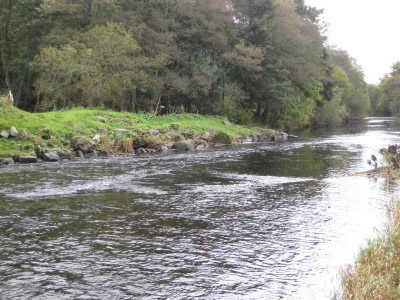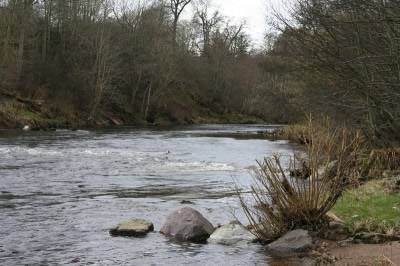These bulletin blogs represent news about Finavon and the South Esk, and my views as a riparian owner. They are not the views of any other organisation, nor are they designed to promote the interests of any individual or organisation other than Finavon Castle Water and factors affecting the fishery. Tony Andrews
August has been a wet month, with little passages of lower levels and quieter pools. In terms of catches it has not been a bad month with our salmon total at 85 for the season, but sadly the sea trout catch numbers are well down at only 78 for the season.
It has been a strange summer. Daytime temperatures have never gone above 22C and at night have sometimes been as low as 3C, or virtually freezing. Even without the unusually high water levels it would have been a far from ideal night-fishing year, but the combination of high water plus low temperatures made the sea trout very reluctant to take the fly. The best results came from anglers who were prepared to up the size of the fly and get it well down in the water in pools like Indies, Melgund, Haughs and Boat Pool.
As we enter autumn proper at the beginning of September sea trout fishing is effectively over for 2011, although I note that occasional trout of 2lbs and above are being caught on the Kinnaird Beats downstream of Brechin.
Of course the really great thing is that today (31/8) is that the netting season ends. From tomorrow on therefore our salmon and later running grilse will have free access to the river. What is now needed is more rain to keep the water levels at a good height for encouraging fish to run through the lower beats into the middle and upper system.
The pattern at this time of year is that, as the autumn wears on and the night frosts start to put a nip in the air and water, the fish move more slowly through the middle river. The effect of this pattern is that further up the river the proportion of silver to coloured fish diminishes. By mid October you would be lucky to catch a silver salmon above Cortachy. At Finavon however I have noticed in recent years that the proportion of fresh to coloured fish changes from about 3:5 to 2:5 during the month of October. But an awful lot depends on conditions, which is always the case on this little river – not quite a spate river as you find on the Scottish west coast, but not far off with a fining down period after a spate of 2/3 days.
We still have some days autumn salmon fishing available in September, but October is looking nearly full. If you want to fish at Finavon the easiest thing to do is to phone Moray on 07835 717 150 to enquire about availability.

